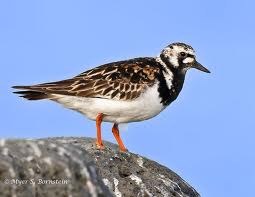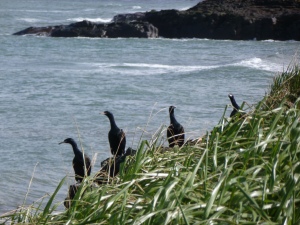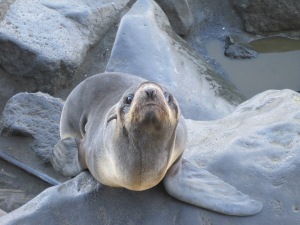Sept. 17-20 Trip to St. Paul Island,,, Part 2…
The Pribilof’s are known as the Galapagos of the North due to the fact that there are so many different species of birds on the islands. I would not consider myself adept at birds, but after this day, I have a better appreciate of those that love this ‘activity.’
St. Paul Island is home to millions of seabirds nesting on the steep shores of the island. There are also rare Asiatic birds, blown off course during their migration or dropping in just briefly on their way to other breeding and nesting destinations.
The first birds we saw were both Tufted Puffin and Horned Puffin (white breast). It was amazing how close we were to them and how incredibly beautiful they are.

As we continued our tour on this beautiful fall day, it was so clear that we saw Otter and Walrus Island as well as St. George Island, not always able to be spotted from St. Paul! Harbor Seals breed on Otter Island, several miles southwest of St. Paul Island, but nonetheless are often seen off St. Paul shores. Occasionally, Steller sea lions haul out on St. Paul, but usually take refuge in the rookery at Walrus Island, some 10 miles northeast of St. Paul. On extremely rare occasions, Grey whales, Orcas, and walrus are observed offshore.
We spotted wild celery all over the place, however, it was past its prime for eating.
“Sea Lion Neck” was the next stop on our tour. Currently it is only open to Sea Lion hunters (Native’s only) and this tour! At the end of the road, 11 miles away from town, is Webster lake and a memorial to the old church that once stood at that site. There is also a cabin/house that anyone can rent (for free) if they care to go out there and explore.
Birds we saw on this adventure:
 Snow bunting
Snow bunting- Sharp tailed sandpiper (Asian Born)

 Rock sandpiper
Rock sandpiper- Fox sparrow and goldencrown sparrow both from mainland, AK
- Pacific golden plover
- Wandering tattler

 Ruddy turnstones
Ruddy turnstones- Red faced Cormorants


- Red legged kittiwake (big eyes, red legs) very rare, ‘chasers’ come here to see these

- Common kittiwake (black legs) one of most common gulls in world
- Lapland longspur (song bird)

- American pipit

We DID NOT SEE but our guide has spotted a White Tailed Eagle (sea Eagle) here this summer. It probably stopped over enroute from Russia. Neither did we see the elusive shrew, which is sometimes spotted under the pieces of plywood out near one of the points.
After the tour we made it back to our little apartment and decided it was time for dinner. The Trident Plant, where million’s of pounds of crab are processed each spring (see March blog) was a bit slower this time of year as they were now processing halibut. For $20 pre paid you can go to the cafeteria and eat, and this time of year, endless halibut is well worth $20! There were very few staff from the plant there and we enjoyed dinner there 2 nights in a row!
We also ran into the store and there photo’s are a reminded of the high cost of living in these remote rural communities, can you believe the price of soup? (cans are heavy!).



So ends my exciting trips to the Pribilof Island’s for this year! All 3 were an adventure and I am blessed to be able to get to these places for WORK.
timi

















































